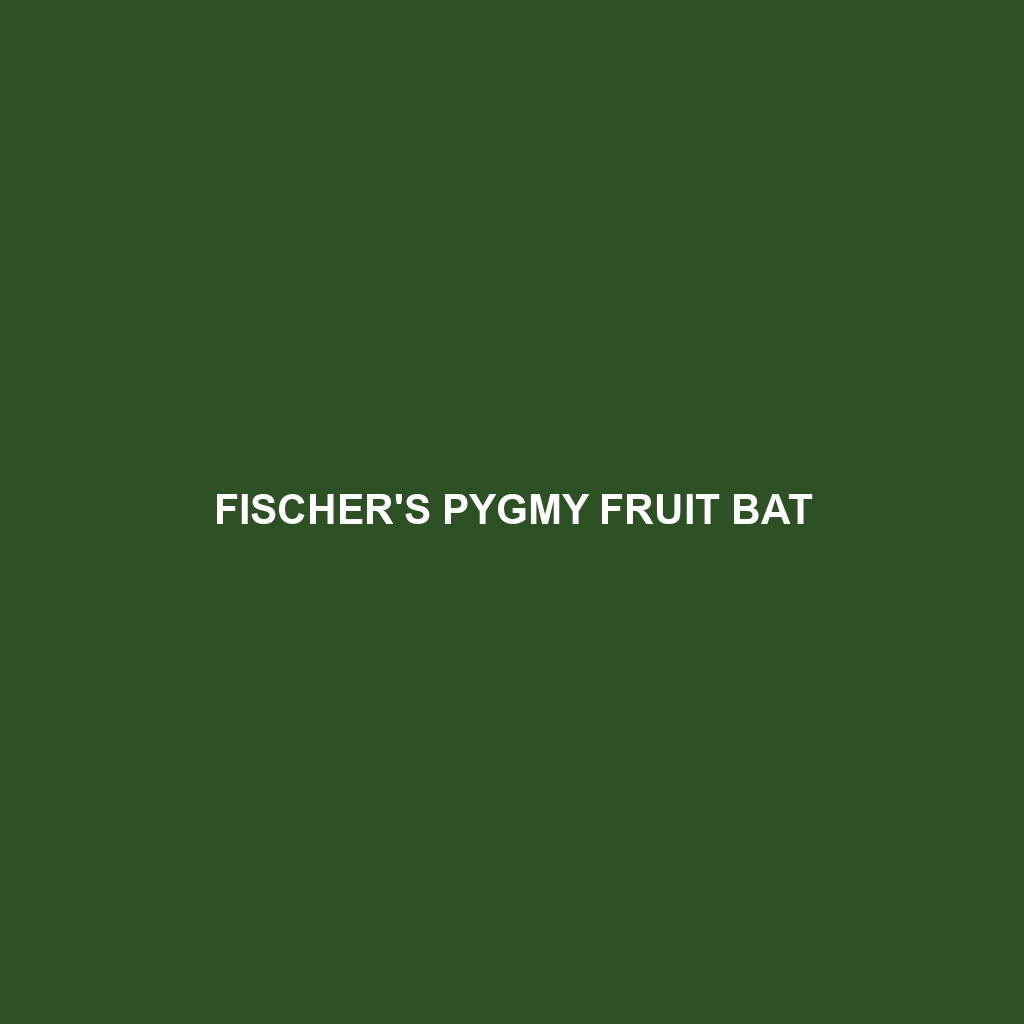Fischer’s Pygmy Fruit Bat
Common Name: Fischer’s Pygmy Fruit Bat
Scientific Name: Hypsugo fischeri
Habitat
Fischer’s Pygmy Fruit Bat is primarily found in the tropical rainforests of Central and West Africa. They inhabit dense forest canopies, often preferring areas near water sources such as rivers and streams. This bat thrives in humid environments, where it can find suitable roosting sites in tree hollows and foliage.
Physical Characteristics
This small bat measures about 3 to 5 inches in body length, with a wingspan of approximately 10 to 11 inches. Fischer’s Pygmy Fruit Bat has a distinctive golden-brown fur, with lighter underbelly hues. Its rounded ears and large eyes offer exceptional night vision, crucial for its foraging behavior. Notable features include its tiny size, which allows it to maneuver deftly through dense vegetation.
Behavior
Fischer’s Pygmy Fruit Bat is predominantly nocturnal, engaging in various behaviors such as foraging for fruits and nectar during the night. They are social animals that often roost in colonies, providing safety in numbers. Their echolocation abilities allow them to navigate and hunt effectively in complete darkness. Mating displays and vocalizations are also observed during the breeding season.
Diet
This species primarily feeds on ripe fruits, nectar, and pollen, playing a crucial role in pollination and seed dispersal for many rainforest plants. Their diet consists of soft, sugary fruits such as figs and bananas, making them important for sustaining the ecosystem. Fischer’s Pygmy Fruit Bat’s feeding habits significantly contribute to the growth and health of their native habitats.
Reproduction
Fischer’s Pygmy Fruit Bat typically breeds once a year, with peak breeding seasons occurring during the warmer months. Females usually give birth to a single pup, which they care for intensely during the early stages of development. The young bats are weaned after several weeks and begin to fly and forage with their mothers shortly thereafter.
Conservation Status
The current conservation status of Fischer’s Pygmy Fruit Bat is classified as vulnerable. The primary threats to this species include habitat loss due to deforestation and human encroachment. Conservation efforts are essential to maintain their populations and mitigate these threats.
Interesting Facts
One fascinating aspect of Fischer’s Pygmy Fruit Bat is their ability to consume a wide variety of fruits, making them incredibly adaptable. They can navigate through densely packed trees with remarkable agility thanks to their small size. Additionally, they are known for their unique vocalizations that can vary between different populations.
Role in Ecosystem
Fischer’s Pygmy Fruit Bat plays a vital role in its ecosystem as a pollinator and seed disperser. By foraging on fruits and flowers, they help maintain the health of various plant species, ensuring biodiversity within their rainforest habitats. Their interactions with plants and other wildlife highlight the importance of bats in maintaining ecological balance.
